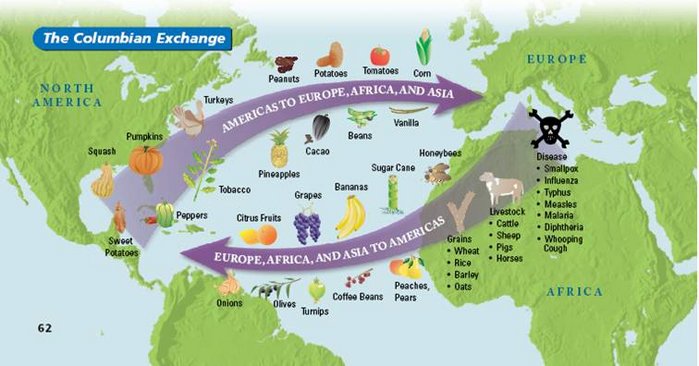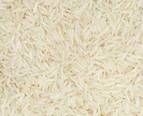Overview of the Columbian Exchange
Millions of years ago, the landmass Pangaea drifted apart creating two distinct worlds (McNeil, 2008). North and South America, commonly referred to as the New World, were separated from Eurasia and Africa, which are the Old World (Crosby, 2007). According to Crosby (2007), this continental shift and separation lasted so long that two distinct worlds were created. For instance, rattlesnakes evolved in the New World while vipers were present in the Old World (Crosby, 2007). These two worlds were reunited in 1492 when Columbus set foot in the Americas (Crosby, 2007).
Although questions stand whether Columbus was the first to discover America, he was the first to initiate an exchange of many plants, animals, and diseases between the two worlds (Crosby, 1972). “The decades following 1492 launched an unparalleled exchange of crops in what has become known as the Columbian exchange” (Carney, 2001). In 1972, Crosby coined the term the Columbian exchange in his book The Columbian Exchange: Biological and Cultural Consequences of 1492. Crosby (1972) used the term to mean the transferring of culture and biological organisms between the two worlds and the beginning of a homogeneous world.
The Columbian exchange started to connect the New and Old Worlds with the transmission of ideas, plants, animals, and diseases. Two worlds that had grown apart with very different organisms started to become homogeneous (Crosby, 1972). Nowadays historians and biologists are still investigating the lasting effects of some of the plants and animals Columbus and other explorers exchanged between the two worlds (McNeil, 2008).
Columbus had no idea what kind of new world he was creating. Thinking he was in Asia, Columbus died never knowing what a connected and now biologically chaotic world he started (Crosby, 1972). The differences between the worlds were vast (Crosby, 1972). Some of the most influential items brought from the Old World to the New World were horses, pigs, chickens, rice, sugar cane, smallpox, malaria, and the common cold (Learn NC, 2008). A few items from the New World to the Old World included maize (corn), turkeys, llamas, potatoes, peanuts, tomatoes, and pineapple (Learn NC, 2008).
The Columbian exchange was not an accident. As Europeans sailed across the world, they brought with them foods they knew how to cook and materials they knew how to use (Crosby, 2007). Europeans knew how to cook rice, ride horses, and butcher pigs and chickens. They were comfortable living with the items they had, but they were traveling to a new place and had no idea what the place would be like. When coming to the New World, they used what they already knew how to use and learned to use new items from the New World. After finding out how useful items were from the New World, they traveled back to the Old World with the items. These items spread throughout the Old World. A huge biological change occurred due to travelers introducing items to the other world. The environments of the world changed so drastically that the inhabitants of the worlds were affected (Crosby, 1972).
Imagine the Americas without pigs and horses or even the common cold. Imagine Ireland without the potato. The Columbian exchange changed history and changed two worlds that were once very separate worlds (Mann, 2011). The spreading of ideas and culture have impacted history, but the changes Columbus brought about biologically changed the world in ways scientists are still realizing and figuring out now (Mann, 2011). Without the Columbian exchange, history would be different.
The Columbian exchange has changed the modern world through the introduction of invasive and nonnative species. Because of the Columbian exchange, humanity has achieved the ability to manipulate the world and what is done in the world for better and for worse (Sale, 1990).
Dozens of crops, animals, diseases, and ideas were exchanged between the two worlds. The Columbian exchange is a vast subject once one realizes the number of items exchanged and the effects of the items. This website takes a closer look at a few of the most influential items exchanged and explores how these items influenced the world. Click on the pictures below to learn more about the influences of maize, potatoes, rice, and smallpox.
The Columbian exchange has changed the modern world through the introduction of invasive and nonnative species. Because of the Columbian exchange, humanity has achieved the ability to manipulate the world and what is done in the world for better and for worse (Sale, 1990).
Dozens of crops, animals, diseases, and ideas were exchanged between the two worlds. The Columbian exchange is a vast subject once one realizes the number of items exchanged and the effects of the items. This website takes a closer look at a few of the most influential items exchanged and explores how these items influenced the world. Click on the pictures below to learn more about the influences of maize, potatoes, rice, and smallpox.






